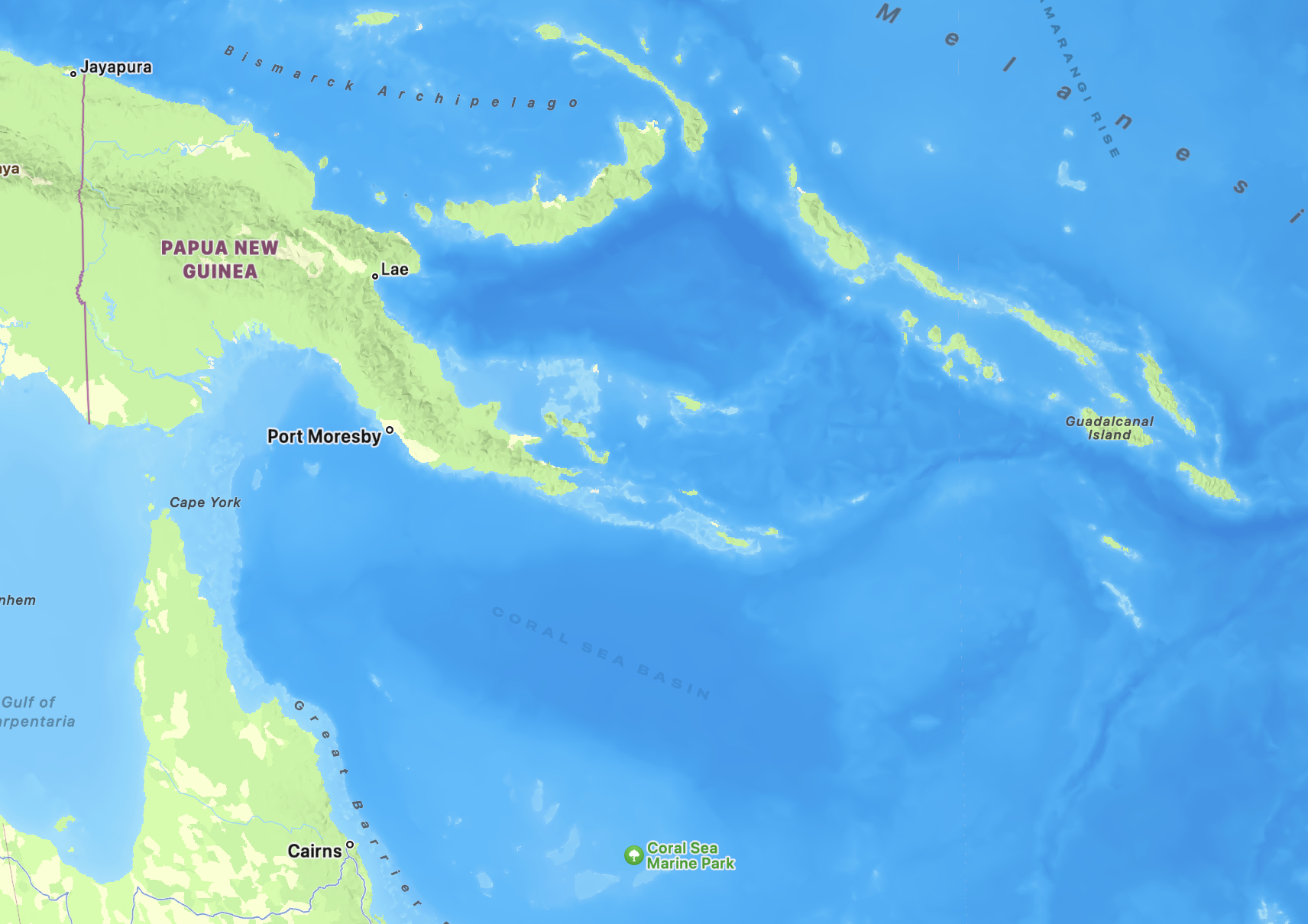
From December of 1941 through the middle of the next year, the Japanese Army and Navy enjoyed an unbroken series of victories that carried them to the doorstep of Australia. The conquest of Australia was indeed their next major endeavor. They planned to begin it by taking Port Moresby, on the southern coast of New Guinea, from which the whole of northern and eastern Australia would be easily reachable.
Their first setback came in early June 1942 at the Battle of Midway, which John Keegan called “the most stunning and decisive blow in the history of naval warfare.” It was that; but the Japanese forces still held all the territory they had conquered in the previous seven months. What Midway did, more than anything else, was to demonstrate with an absolute conclusiveness that Japan was not invincible — indeed was quite vulnerable.
Two steps followed for the Allied forces. (By Allied forces I mean Americans and Australians; the division of labor had left the British to focus on China, India, and Burma.) One was to prevent the taking of Port Moresby; the second was to begin reclaiming territory that had great strategic importance. From the Allied perspective, a key piece of land was Guadalcanal, the largest of the Solomon Islands, east of New Guinea. The Japanese, having occupied the island in May, had immediately begun constructing an airfield from which they would be able to send aircraft to disrupt, or prevent altogether, shipping between the United States and Australia. Since the Japanese already had a major air and sea base at Rabual on New Britain, a functioning airfield on Guadalcanal would establish dominance over a large chunk of the south Pacific.
It was vital, the Allied commanders believed, to drive the Japanese off Guadalcanal, complete the airfield for their own use, and thereby (a) protect shipping lanes and (b) establish a staging ground for an assault on Rabual and New Britain more generally. Guadalcanal was, then, the first island in the island-hopping strategy that would eventually lead the Allied forces to Japan.
When Allied troops landed on Guadalcanal in the early morning of 7 August, the Japanese soldiers and workers at the airfield abandoned it immediately, having been taken wholly by surprise. Indeed, the Japanese command had not expected an Allied counterattack of this size for some time. One of the first consequences of the Allied landing on Guadalcanal was the shifting of Japanese troops from the assault on Port Moresby — where Australian forces had been holding off Japanese forces in terrible conditions and with extraordinary determination — to the Solomons. So Port Moresby was safe, at least for a while.
The Japanese were determined to show the Allies that the re-taking of territory was impossible; the Allies were equally determined to make their first major counter-attack a successful one. The consequences of failure on Guadalcanal were, for both sides, too dire even to contemplate.
In the battle for the island — a battle which did not definitively end until February of 1943 — three points were established that dictated the remainder of the war. First: that the resources, in personnel and equipment, that the Allies could bring to bear on the conflict were unprecedentedly enormous. Second: that, Japanese assumptions to the contrary, American soldiers would fight bravely and indeed relentlessly. Third: that Japanese soldiers would fight to the death — death by the enemy’s hand or by their own or by starvation — rather than be taken prisoner. These were the lessons of Guadalcanal and they were learned with great pain on all sides. The Japanese came to call Guadalcanal “Starvation Island” and “Death Island”; to the Americans, William Manchester says, it was “that fucking island,” and the fighting there “worse than Stalingrad” — though (or therefore) to this day the insignia of the First Marine Division bears the single word “Guadalcanal.”
Something about the War in the Pacific was, and still is, summed up in that one campaign for that one not-obviously-important island. It has resonated in memories and minds through the decades. It seems to have something it wants to tell us about war.
Sources:
- Anthony Beevor, The Second World War
- James Jones, The Thin Red Line
- John Keegan, The Second World War
- William Manchester, Goodbye, Darkness
- Ian W. Toll, The Pacific War Trilogy (reading in progress)